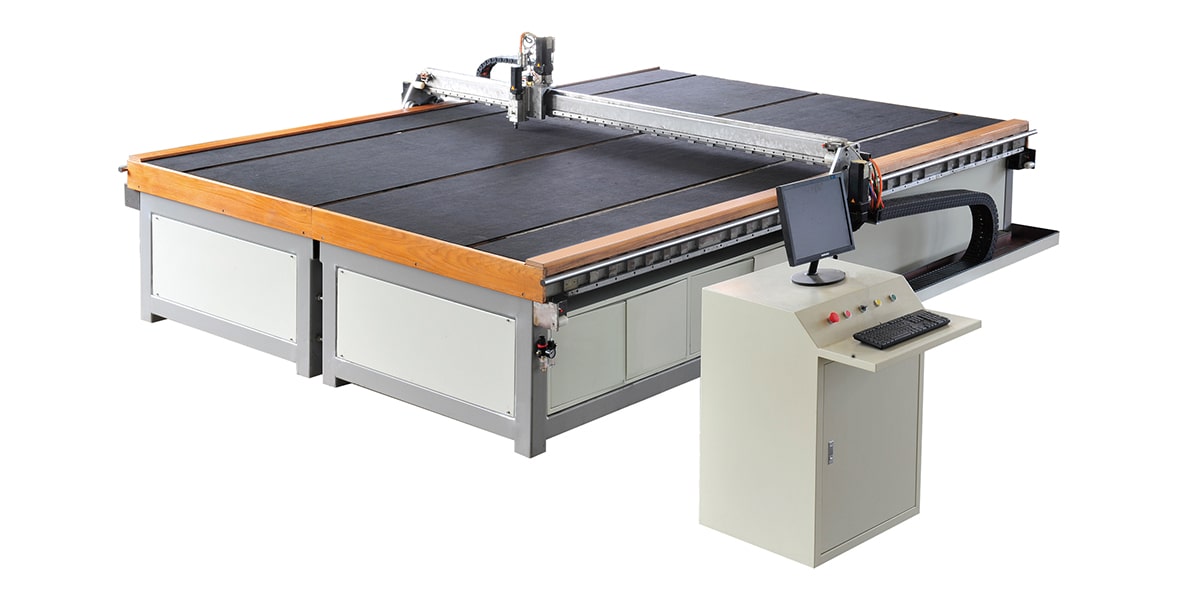Glass cutting is an essential process in numerous industries, including construction, automotive, electronics, and art. Over the centuries, the methods and technologies used for cutting glass have evolved dramatically, transitioning from simple manual techniques to sophisticated high-tech machines. This evolution has significantly improved the precision, efficiency, and versatility of glass cutting, enabling the production of high-quality glass products for a wide range of applications. This article explores the journey of glass cutting technology from its early manual beginnings to the advanced, automated systems of today.
Early Manual Glass Cutting Techniques
In ancient times, glass cutting was a labor-intensive process that required significant skill and dexterity. Early glass artisans used simple hand tools, such as metal or diamond-tipped scribes, to score the glass surface. They would then apply pressure along the scored line to snap the glass along the desired path. This method, while effective for small-scale and artistic applications, had limitations in terms of precision and consistency. The quality of the cut largely depended on the artisan's skill and experience.
Introduction of Simple Machines
As the demand for glass products grew, so did the need for more efficient and reliable cutting methods. The introduction of simple mechanical tools in the 19th century marked the first significant advancement in glass cutting technology. One of the earliest innovations was the wheel cutter, a handheld tool equipped with a small, hardened steel or tungsten carbide wheel. The wheel cutter allowed for smoother and more precise scoring of the glass, reducing the risk of breakage and improving the overall quality of the cut.
Emergence of Automated Glass Cutting Machines
The industrial revolution brought about significant changes in glass manufacturing, including the development of automated glass cutting machines. These machines used mechanical systems to score and break the glass, greatly increasing production speed and consistency. Early automated machines were typically driven by steam or hydraulic power and were capable of cutting large sheets of glass with greater accuracy than manual methods.
Advancements in CNC Technology
The advent of computer numerical control (CNC) technology in the late 20th century revolutionized the glass cutting industry. CNC glass cutting machines use computer-controlled systems to precisely guide the cutting tools along the desired path, allowing for highly accurate and complex cuts. These machines can be programmed to perform a wide range of cutting operations, including straight cuts, curves, and intricate patterns.
CNC technology also enabled the integration of multiple cutting tools, such as diamond-tipped blades, water jets, and laser beams, into a single machine. This versatility allows manufacturers to choose the most appropriate cutting method for each specific application, further enhancing the quality and efficiency of the cutting process.
High-Tech Innovations in Glass Cutting
Today, the glass cutting industry continues to benefit from ongoing technological advancements. Modern high-tech glass cutting machines incorporate a range of innovative features that enhance performance, precision, and ease of use. Some of the most notable innovations include:
Laser Cutting Technology: Laser glass cutting machines use focused laser beams to melt and vaporize the glass along the desired cutting path. This method offers exceptional precision and minimal material wastage, making it ideal for applications requiring intricate and delicate cuts. Laser cutting is also non-contact, reducing the risk of surface damage and contamination.
Water Jet Cutting: Water jet glass cutting machines use high-pressure streams of water mixed with abrasive particles to cut through the glass. This method is highly effective for cutting thick and multi-layered glass, as well as complex shapes. Water jet cutting is also environmentally friendly, as it produces no harmful fumes or residues.
Automated Loading and Unloading: Modern glass cutting machines often feature automated systems for loading and unloading glass sheets, reducing manual labor and increasing production efficiency. These systems can handle large and heavy glass panels with precision, minimizing the risk of damage during handling.
Advanced Control Systems: Today's glass cutting machines are equipped with sophisticated control systems that allow for real-time monitoring and adjustment of cutting parameters. These systems ensure optimal performance and consistency, even for complex and high-volume production runs. They also provide valuable data for process optimization and quality control.
Conclusion
The evolution of glass cutting machines from manual tools to high-tech automated systems has transformed the glass manufacturing industry. These advancements have not only improved the precision, quality, and efficiency of glass cutting but also expanded the possibilities for innovative glass products and applications. As technology continues to advance, we can expect further improvements and new developments in glass cutting machines, driving the industry toward even greater heights of excellence and sustainability.
